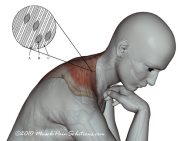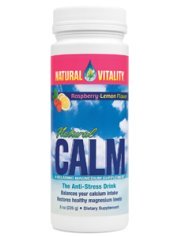Trigger Point Shots:
The Good, The Bad, and The Ugly
Trigger point injections (commonly known as trigger point shots), were pioneered by Janet Travell, MD who created the field of trigger point therapy. She was a talented, passionate doctor, who was constantly learning and developing techniques to help her patients heal. Having discovered that about 80% of chronic pain patients were afflicted with undiagnosed trigger points, she experimented with trigger point injections, dry needling, and spray-and-stretch techniques.
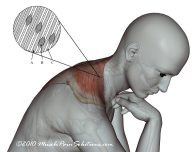
What is a Trigger Point?
Basically, it is a balled up area in the muscle that is in a constant contracted state. This prevents blood flow to that part of the muscle. Trigger points create pain that can be occasionally near the area of the trigger point, but is often referred to distant areas in the body. For a more complete explanation, here.
Evaluation for Trigger Point Shots

Ideally, the doctor should perform a full analysis asking about your pain patterns, what motions exacerbate or alleviate the pain, ergonomic habits such as how you sleep, work, drive, and perform your daily activities. Next, a thorough exam should be performed, evaluating your range of motion, and examining your muscles for tenderness. In a perfect world, your doctor would be able to use injection or spray-and-stretch according to your situation. In reality, there are very few doctors practicing this way.
Usually they ask a couple of questions, do an abbreviated exam, and many do not understand thoroughly how trigger points work. It is somewhat tricky to find the source of the pain since the trigger point is only in the pain pattern 30% of the time! I have had patients tell me that before getting a trigger point injection, the doctor just asked where it hurt, pushed on muscles in the area, and injected a tender point that they found without further assessment. The problem with this approach is that often the pain is being referred from a trigger point outside of the region of pain. In fact, the primary trigger point is out of the area 70% of the time! So the points found in the area are often secondary trigger points. This is why it is really important to find someone that really understands and works with trigger points on a regular basis.
One way that I came up with to get around this problem when I refer patients for trigger point injection, is to have them come into my office and mark their primary trigger points in pen right before their appointment.
What substance is injected during Trigger Point Shots?
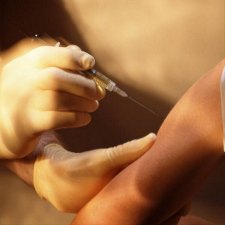
This is an important question as the answer is quite variable. Dr. Travell recommends in her book Myofascial Pain and Dysfuntion: The Trigger Point Manual a local anesthetic such as procaine, lidocane at 0.5% to 1.0% solution. Similar results have been obtained with saline solution or a glucose solution. A twitch response must be elicited for treatment to be effective with injection of non-myotoxic drugs (drugs that do not damage the muscles). She warns against using corticosteroid injections in the central trigger points (muscle belly) because it has not been shown to be more effective than saline solution, and this substance is destructive to muscle and connective tissue (the supporting fibers around the muscle). It has been reported to increase the danger of tearing and atrophy (break down) of the muscles and connective tissue, sometimes even requiring surgical repair. It can be slightly more helpful at the muscle insertion (where the muscle attaches to the bone) but still carries that same risks.
Botulinum Toxin A (Botox) paralyses the muscle fiber where it is injected so the nerve has to grow a new ending and create a new endplate for communicating with the muscle fibers. As such, it could be useful if used in very small doses localized to the defective endplates only (i.e. in the trigger point). It should not be used indiscriminately on healthy muscle tissue, or in large doses in the hopes of getting a trigger point by default. Unfortunately, there is a current practice to do non-specific injections around the head for migraines without even evaluating for trigger point location.
Drs. Travell and Simon, through many years of study and clinical practice came to the conclusion that the mechanical disruption of the needle going into the trigger point was the most important part of deactivating a trigger point. In fact, they tried needling trigger points without injecting anything and found that it deactivate trigger points, in most cases, as effectively as any type of injection. Thus the dry needling method was born.
Trigger Point Shots Technique
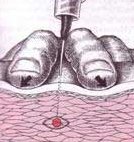
According to Dr. Travell, the two most important parts of the procedure, are to needle all the loci (active spots) within the primary trigger points, and follow the procedure with full active range of motion of the treated muscles. The needle is inserted through the skin and moved in and out of the trigger point to deactivate all the active loci and create focal twitches in the muscle that is felt as a cramping sensation by the patient. Injection should be followed by three repetitions of the full range of motion of the muscle, meaning it should be shortened or contacted fully, and then stretched to its longest point. The patient should then be taught how to stretch the muscle(s) every 60-90 minutes during waking hours.
Though there is no accepted standard of how many trigger points to inject at one time, the feedback I have received indicates doctors will inject no more than 6 points. How frequently they will repeat them depends on what has been injected and the practitioner involved; I have seen it range from 2 weeks to 6 months.
Risks of Trigger Point Shots
Though trigger point injections are generally safe, there are a few risks associated with the procedure. Common side effects include temporary muscle soreness, bruising, bleeding, and occasionally infection. Rarely, you can have weakness in the injected muscle (up to 45 minutes). It is possible while injecting a muscle on the rib cage to puncture the lung and cause a partial collapse, though precautions are taken against this. Other side effects come from corticosteroid injection (as discussed above) and include weakening of the muscle tissue and connective tissue locally (though not your strength in using the muscle). If many injections are performed, there is a possibility of depression of the immune system and other systemic effects.
Alternative Treatments to Trigger Point Shots
Because of possible side effects, the limited numbers of trigger points that can be treated per session, and the difficulty of finding a practitioner who truly understands trigger points, I recommend several alternatives before trying trigger point injections.
Self Massage
There are several types of massage that I teach my patients to perform on themselves. These simple techniques can work wonders without other interventions much of the time. Learn more about trigger point massage here.
Dry Needling
This is a great alternative to trigger point shots as it is more readily available, has less risk, and tends to have more highly trained practitioners. I have a whole page on this method here.
Gua Sha
This is an ancient Chinese folk remedy that can be used for breaking up scar tissue and eliminating pain due to associated scar tissue (though this doesn't specifically treat the trigger point.) Learn more here.
Conclusion
Trigger point shots are a viable option for musculoskeletal pain but I recommend exhausting other options before turning to this treatment. I have sent people for injection, but have had to find the trigger points and mark them ahead of time to make sure the correct ones were injected. Even then, the practitioner did not perform multiple passes through the trigger point or follow up with active range of motion of the muscle. I have had some patients where injections were the missing piece needed to eliminate their long standing pain. When trigger point shots are used in conjunction with many other types of treatment (a summary can be found here), it might be the right treatment for you if you can find a skilled practitioner in your area.
For a complete summary of all types of treatment options, return from Trigger Point Shots to Trigger Point Treatment.
Reference and Photo Credits:
Travell JG, Simons DG, Simons LS: Myofascial Pain and Dysfunction: The Trigger Point Manual. Volume 1. Edited by Johnson ES. Lippincot Williams & Wilkins, Philadelphia, 1999. pp 12-177.



